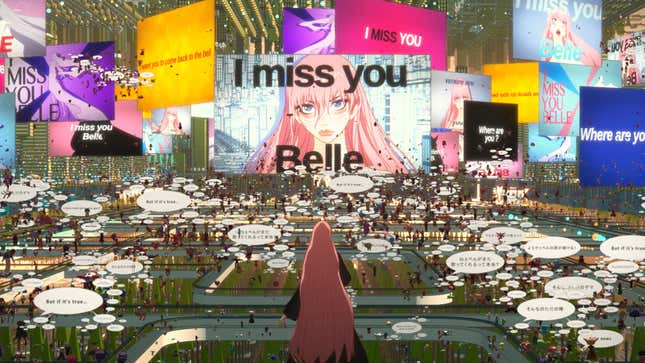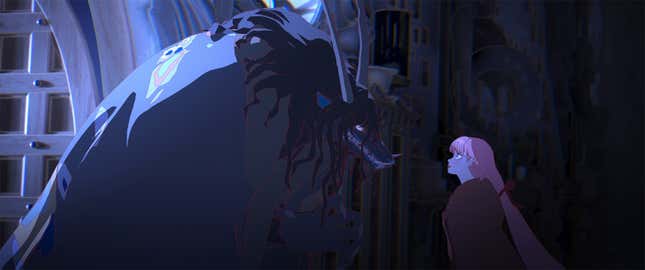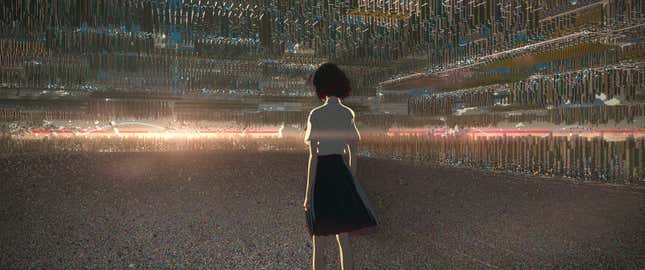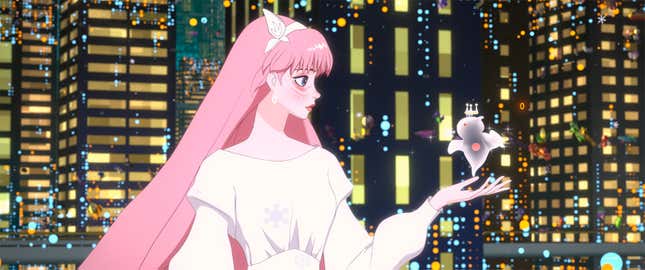Belle Presents an Eye-Popping Vision of the Internet’s Potential for Beauty
Japanese writer-director Mamoru Hosoda’s new animated movie references Beauty and the Beast, and explores a colorful metaverse where pop music unites
EntertainmentMovies

When we meet the titular protagonist of visionary Japanese director Mamoru Hosoda’s new animated movie Belle, she is riding on the head of a humpback whale floating through the air. The whale’s body is outfitted with a series of barnacle-like speakers, blasting the upbeat pop song with Fela Kuti-esque percussion that Belle is singing along to. During an emotional peak, she thrusts out her arms as if she’s going to take flight and flowers explode from her body. There doesn’t seem to be enough pixels in the world to capture all these ideas.
Belle is broadcasting from a virtual metaverse called U, “the biggest internet society in history,” a robo-voiced narrator tells us by way of welcome. It’s a place where its 5 billion users can “come together to relax, or just have fun.” While not without its trolls and dramas, U might as well be short for utopia—it’s a place where users can take on other forms to show their true selves. The Beauty and the Beast-inspired Belle’s ultimate message of liberation by virtual means suggests a rather optimistic view of internet culture that Hosoda confirmed in an interview this week with Jezebel.
“When I look at other directors’ take on the internet, it tends to be negative—it’s almost like a dystopia,” the writer-director said in a Zoom conversation, via a translator. “But younger generations have to live with the internet. I don’t see the point of criticizing the negative side of the internet. They have to really look at how they are going to interact with the internet, how they will take advantage of it. I really think they have to look at it from more of a positive perspective. And I hope Belle is a film that does that.”
U is just one section of Belle’s purview. The movie’s IRL world concerns Belle’s alter ego, a 17-year-old high school student named Suzu, who’s quiet, socially anxious, and traumatized from the death of her mother, which occurred when Suzu was a child. Empathy is Hosoda’s strong suit—2012’s Wolf Children is largely concerned with the existential angst its main characters experience as a result of their mixed-species identities—and he absolutely shines here, giving the animated Suzu more dimensions than typically seen in live action films.-

-

-

-

-

-

-

-

-

-

-

-

-

-

-

-

-

-

-

-

-

-

-

-

-

-

-

-

-

-

-

-

-

-

-

-

-

-

-

-











































